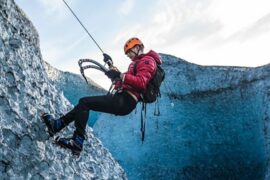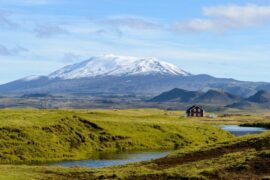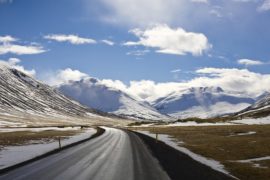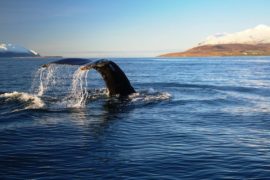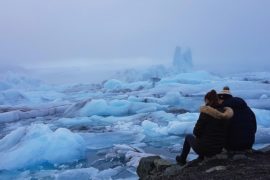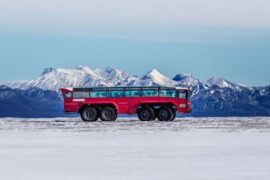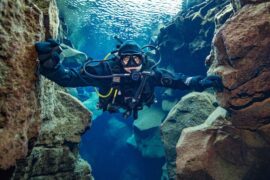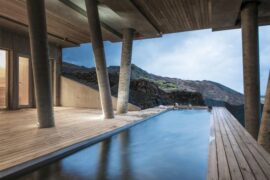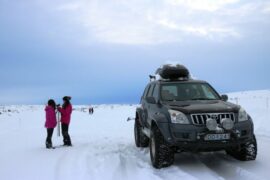Iceland is known for its dramatic volcanic landscapes, where stunning waterfalls fed by glacial rivers thunder over steep cliffs.
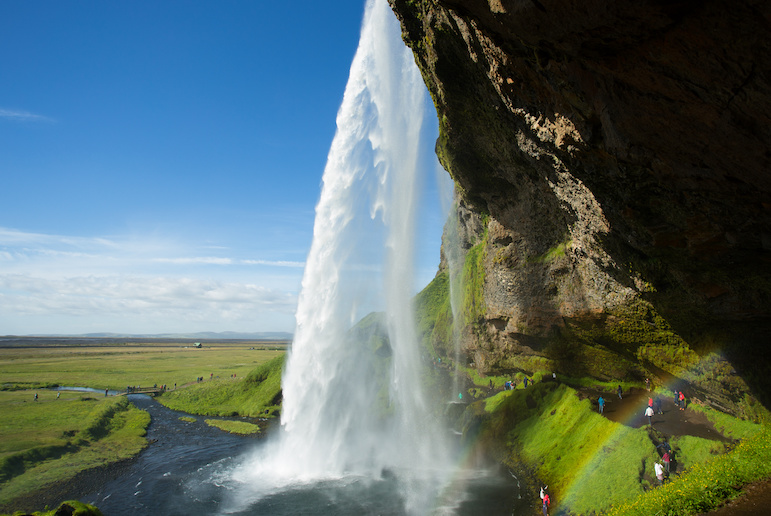
Some are wide, semi-circular falls, such as Goðafoss, where the water roars and twirls in a swirling maelstrom. Others, like Dynjandi, are high falls that gush down in a series of tiers to the plains below.
Iceland is home to all types of waterfall, whose drama and sheer natural beauty never fails to impress.
Is visiting waterfalls in Iceland really worth it?
Everyone loves a waterfall, and Iceland certainly has enough to choose from. There are also plenty of tours available that combine visiting a majestic waterfall with fun activities such as hiking, snowmobiling, thermal baths, glaciers and volcano-watching.
In fact, pretty much any kind of activity can be combined with visiting a waterfall in Iceland.
At some waterfalls you can walk behind the thundering water – prepare to get sprayed! At other falls you can look up at the towering water above you.
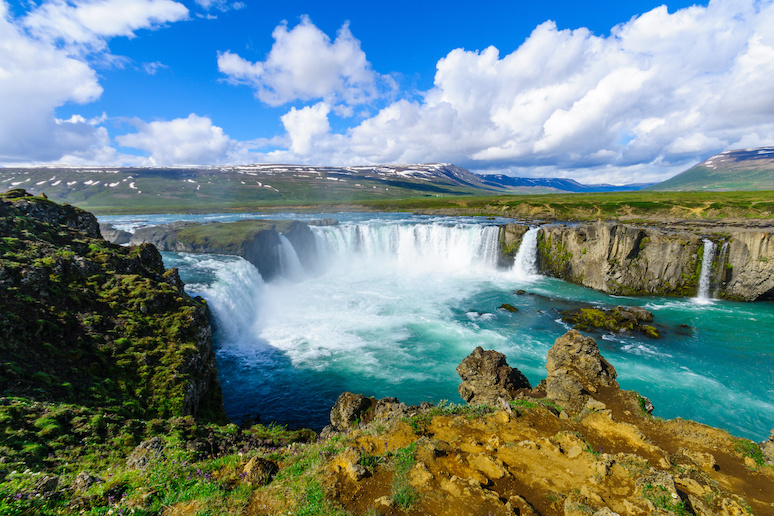
And at others, you can access the top and look down at water below – vertigo-sufferers beware!
Look out for rainbows too. When it’s sunny, the spray from a waterfall means that a rainbow often shows up above the falls.
And, whichever waterfall you visit, amazing shots for your Insta page are a given!
Our top 3 waterfall experiences in Iceland
And if you want to add extra excitement to your waterfall trip, there are plenty of tours that add on fun activities to the drama of a waterfall.
Snowmobile on a glacier and see Skógafoss and Seljalandsfoss
This exciting full-day tour from Reykjavik takes in Skógafoss and Seljalandsfoss waterfalls, plus a snowmobile ride on the Mýrdalsjökull Glacier.
Soak in a thermal bath and see Langifoss
We love this guided hike along the Hringsgil Canyon that takes in the beautiful two-tiered Langifoss waterfall plus a dip in the secluded natural Húsafell Canyon Baths.
What’s not to like about the geothermal pools here, with water temperatures of around 37C, and views of mountains, the canyon and a glacier?
Visit Hjálparfoss and Haifoss on a super jeep tour
Crater lakes, lava fields, waterfalls and hot pools are all included on this fun super-jeep tour of the Landmannalaugar region from Reykjavik.
You’ll visit the two-tiered Hjálparfoss and Haifoss, Iceland’s third highest waterfall, as well as Hnausapollur, Frostastadavatn and Ljótipollur lakes – and you can dip in a thermal plunge pool.
Is it expensive to visit the waterfalls?
One of the great things about Iceland’s natural attractions is that there are no admission fees – and that includes the country’s many waterfalls.
If you have your own transport and are prepared to walk from the road or parking spot then the waterfalls are completely free to visit. For tips on renting a car and driving in Iceland, see our guide.
But, if you don’t want to rent a car, a guided tour can be a cost-effective way of seeing Iceland’s waterfalls – especially if you’re travelling solo.
A full-day tour to Gullfoss, for example, that also takes in the Thingvellir National Park, Geyser and the Kerid Crater costs from just £58 per person from Reykjavik.
Are the waterfalls in Iceland safe to visit?
Yes, Iceland’s waterfalls are safe to visit, provided you keep to the paths and stay behind any barriers. And, of course, don’t try to enter the water!
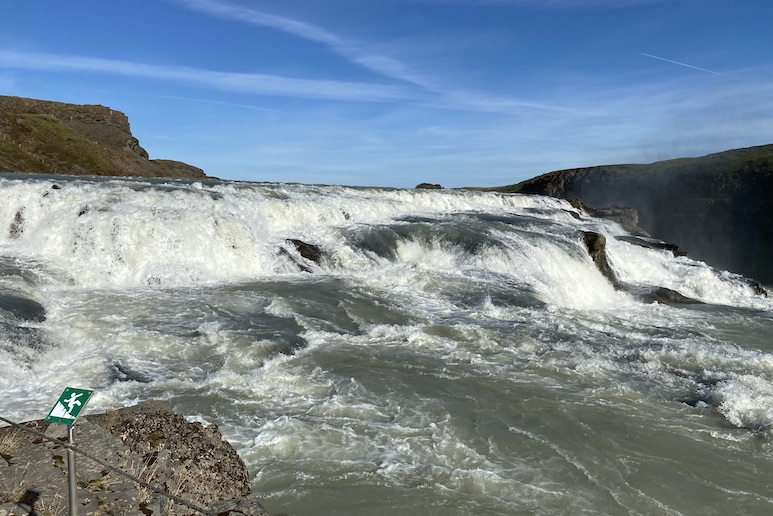
Many of the main waterfalls that tourists visit are fenced off, with clear paths and tracks, so there’s no danger of straying off-piste.
If you visit some of the more remote falls, it’s a good idea to go with an expert guide who knows the way – and always follow their advice.
What to expect when you visit
Iceland’s waterfalls vary from big tourist attractions that can be easily accessed by road, to smaller more remote locations, where you’ll need to hike.
At the more touristy sites, such as Gullfoss, there’s a café, shop and toilets, but most of Iceland’s waterfalls have few facilities, so you’ll need to take your own water and food.
When visiting waterfalls that involve a hike, make sure you come prepared for all weathers as the conditions can change very quickly in Iceland. Wearing layers and sturdy shoes and bringing waterproofs is a good idea.
How easy is it to access the falls?
Again, the falls vary in how easy they are to access. Gullfoss, for example, is close to a main road with a large car park and tarmacked paths to viewing platforms at the top and the bottom of the falls.
There is flat disabled access to the higher viewing platforms.
Several of the waterfalls lie just off the Ring Road, with easily accessible car parks, though you may to have to walk a little from the car park to the falls themselves.
Dettifoss, however, is more remote, though it is now accessed by a tarmacked road.
6 of the best waterfalls in Iceland
So which waterfalls should you visit? Here are six of our favourite waterfalls in Iceland, with all the info on how to visit them independently plus our top tours.
Gullfoss
There’s a reason why Gullfoss is the most popular waterfall to visit in Iceland – and that’s because it’s stunningly beautiful and majestic.
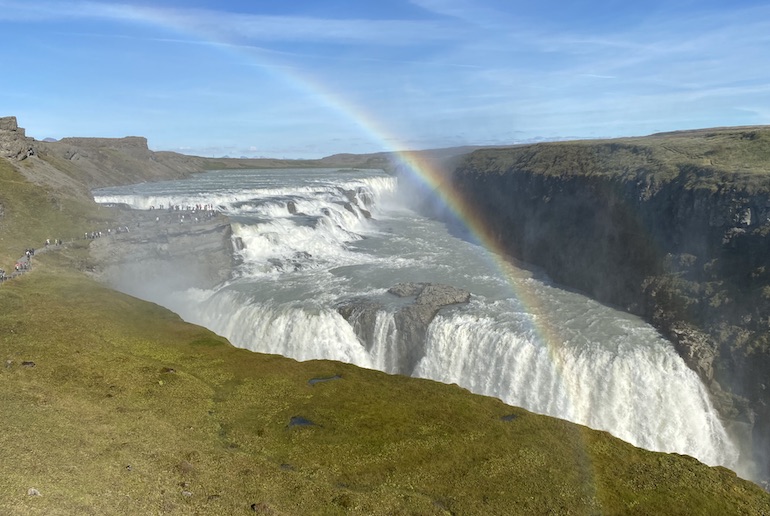
As you approach, you can hear the roaring water way before you see it, but nothing prepares you for the sheer size and drama of the falls themselves.
Fed by the glacial River Hvita, the waters in Gullfoss drop down some 32 metres over two tiers before being funnelled into a narrow deep gorge.
A path runs along the top of the gorge to the lower of the two tiers, and there’s a viewing platform above the waterfall where you can survey the whole drama of the site.
Probably the most accessible of Iceland’s waterfalls, Gullfoss lies just off Route 35 and is easily reached by car from Reykjavik in under two hours.
If you’re visiting independently, try and get there early or late in the day to avoid the tour groups, who usually arrive mid-morning or mid-afternoon.
Recommended tour
Most people visit Gullfoss as part of an organised Golden Circle tour from Reykjavik, which includes a trip to the UNESCO Heritage Thingvellir National Park, Geyser and the Kerid Crater.
Dynjandi
The largest waterfall in the Westfjords, Dynjandi is actually the highest of seven separate falls, one on top of another, that spread out in a fan shape.
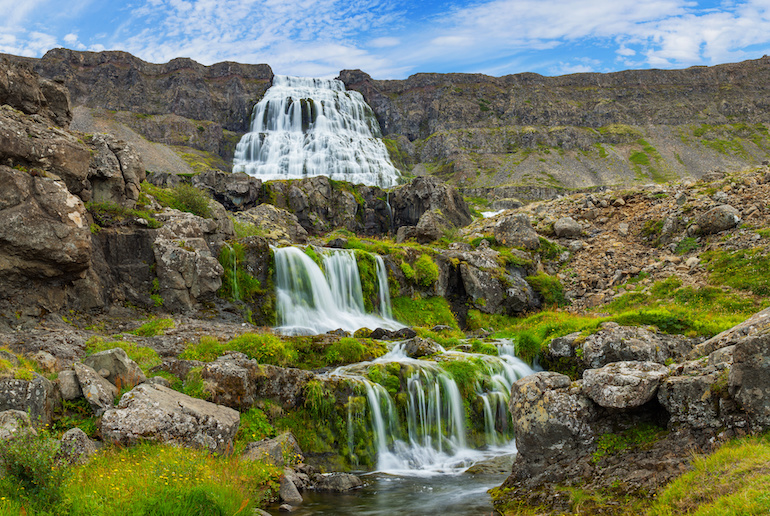
The name Dynjandi means “thunderous” – an apt description of the sound as you approach the falls – and the sheer force and power of the water as it drops around 100 metres is exhilarating.
It takes about 15 minutes to climb the steep, rocky path to the top of the waterfall, but the views from the top are more than worth it.
Dynjandi is a good five-hour drive from Reykjavik, and 90 minutes from Isafjordur on the north coast.
It’s best visited from May to October when the falls are in full spate.
In winter, the access roads are sometimes closed and some years the waterfall can even freeze up completely.
Recommended tour
The best way to visit Dynjandi is on a guided tour. We like this fascinating half-day tour from Isafjordur, which includes a trip to a remote Icelandic farmstead where you’ll learn about traditional farming methods, meet the animals and sample some typical Iceland cake with rhubarb jam.
Goðafoss
Its name meaning the “fall of the gods”, Goðafoss is a beautiful u-shaped semi-circular waterfall fed by two glacial rivers that run off from the enormous Vatnajökull glacier.
Although it only drops about 12 metres, it’s a huge 30 metres wide meaning that a vast volume of water gushes over it at any time.
About thirty minutes’ drive from Akureyri, Goðafoss lies just off Route One, Iceland’s main ring road. For further info on driving Iceland’s Ring Road, see our guide.
There’s a car park just off the main road, with a path to the front of the falls. Alternatively, you can cross the foot-bridge to the other side of the falls, where you get great views and fewer tourists!
Recommended tour
This fun tour from Akureyi includes a trip to Goðafoss, a look round a traditional Icelandic turf house, and a visit to the Magical House of Christmas, where it’s the festive season all year-round.
Skógafoss
With one of the biggest single water drops in Iceland, the towering Skógafoss waterfall is fed by the Skógá river that cascades down for 60 metres to the flat ground below.
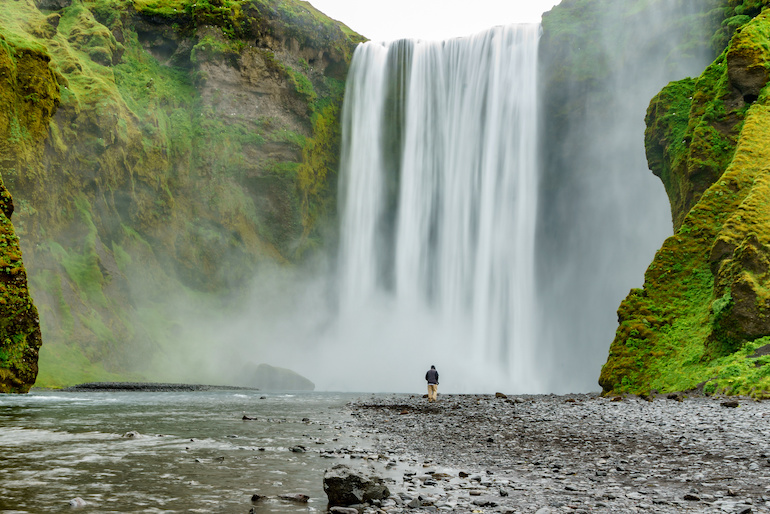
It’s easiest to view the waterfall from the bottom – beware of the spray, though, you may well get wet.
But if you’re fit, we recommend tackling the 370 steep steps up to the top of waterfall from where you get far-reaching views over Iceland’s south coast.
Skógafoss is easy to access, just off Route One (the Ring Road), about two and a half hours’ drive east of Reykjavik.
Recommended tour
We like this full-day tour that includes Skógafoss, Seljalandsfoss (see below) and a trip to the Jokulsarlon Glacier Lagoon, where you can see large chunks of ice floating in the lagoon.
Seljalandsfoss
One of the few waterfalls in Iceland that you can really get up close to – so close that you can actually walk behind it.
Running off from the river Seljalandsá, it has a narrow drop of about 60 metres. But what really makes it stand out is the cave behind it that you can enter.
Just follow the path round which leads into the cave and behind the cascades.
On Iceland’s south coast, it’s also easy to access, just off the Ring Road, under two hours’ drive from Reykjavik.
Recommended tour
Since it’s only about 30 minutes’ drive from Skógafoss to Seljalandsfoss, most tours combine visiting the two in one trip.
We like this full-day trip from Reykjavik that takes in both waterfalls, the Reynisfjara black sand beach and dramatic views of the Eyjafjallajökull volcano.
Dettifoss
In the Vatnajökull National Park in northeast Iceland, Dettifoss claims to be Europe’s second most powerful waterfall after the Rhine Falls in Germany.
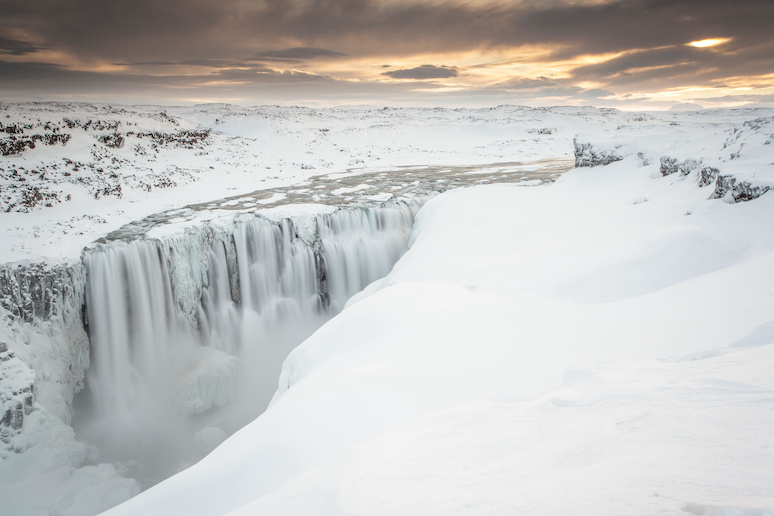
And indeed a massive volume of water spills over these 100-metre-wide falls into the Jökulsárgljúfur canyon below.
Dettifoss lies some 130km east of Akureyi (a drive of around one hour, 45 minutes), and is accessed via the tarmacced Route 862.
Recommended tour
One of our favourite full-day tours, this trip from Akureyi takes in both Dettifoss and Goðafoss, as well as the Myvatn Nature Baths and the mud pools at Hverir.
See also:
11 best hot springs in Iceland
The best volcano tours in Iceland
The best ice climbing tours in Iceland

